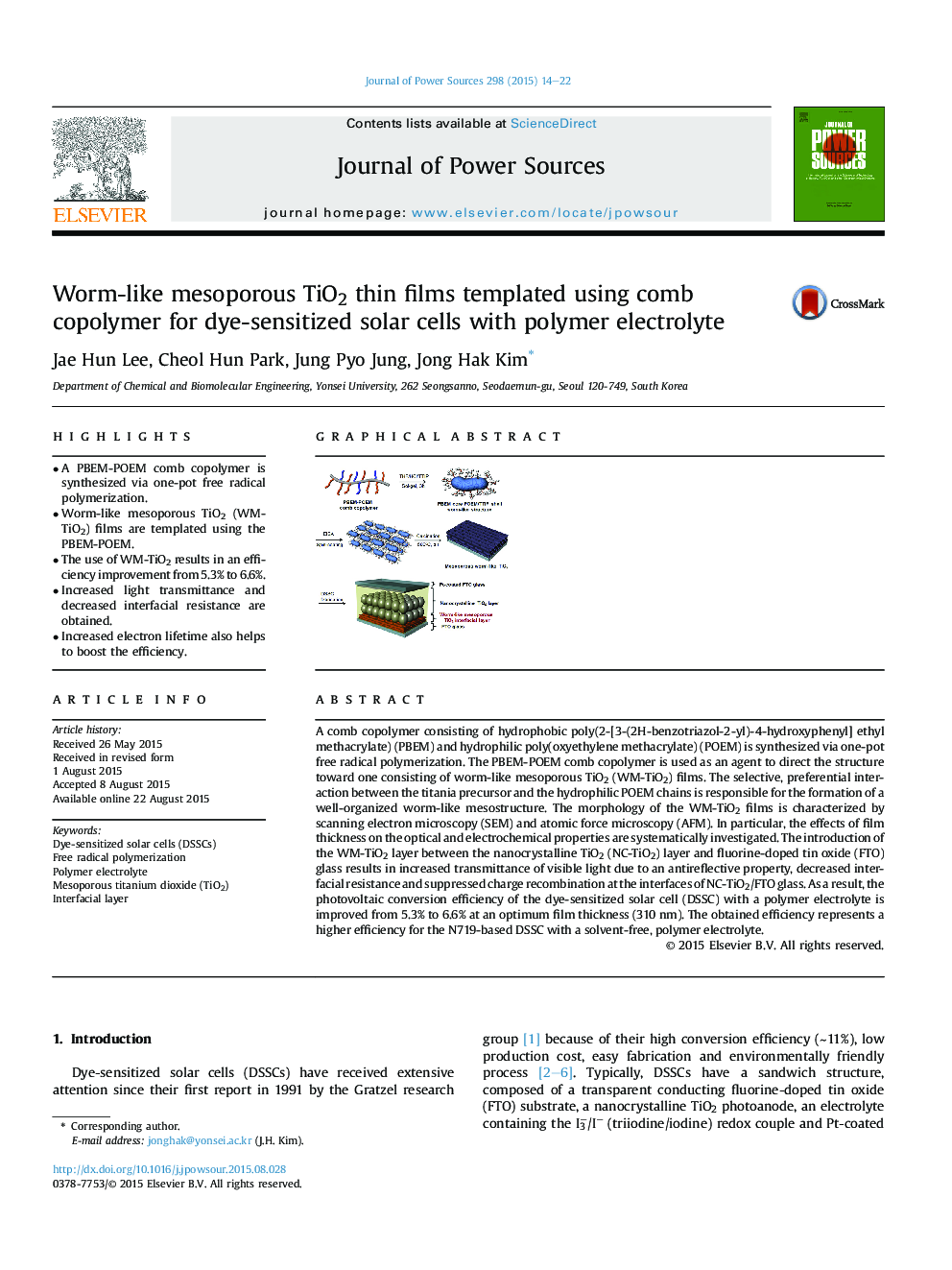| کد مقاله | کد نشریه | سال انتشار | مقاله انگلیسی | نسخه تمام متن |
|---|---|---|---|---|
| 1283856 | 1497934 | 2015 | 9 صفحه PDF | دانلود رایگان |

• A PBEM-POEM comb copolymer is synthesized via one-pot free radical polymerization.
• Worm-like mesoporous TiO2 (WM-TiO2) films are templated using the PBEM-POEM.
• The use of WM-TiO2 results in an efficiency improvement from 5.3% to 6.6%.
• Increased light transmittance and decreased interfacial resistance are obtained.
• Increased electron lifetime also helps to boost the efficiency.
A comb copolymer consisting of hydrophobic poly(2-[3-(2H-benzotriazol-2-yl)-4-hydroxyphenyl] ethyl methacrylate) (PBEM) and hydrophilic poly(oxyethylene methacrylate) (POEM) is synthesized via one-pot free radical polymerization. The PBEM-POEM comb copolymer is used as an agent to direct the structure toward one consisting of worm-like mesoporous TiO2 (WM-TiO2) films. The selective, preferential interaction between the titania precursor and the hydrophilic POEM chains is responsible for the formation of a well-organized worm-like mesostructure. The morphology of the WM-TiO2 films is characterized by scanning electron microscopy (SEM) and atomic force microscopy (AFM). In particular, the effects of film thickness on the optical and electrochemical properties are systematically investigated. The introduction of the WM-TiO2 layer between the nanocrystalline TiO2 (NC-TiO2) layer and fluorine-doped tin oxide (FTO) glass results in increased transmittance of visible light due to an antireflective property, decreased interfacial resistance and suppressed charge recombination at the interfaces of NC-TiO2/FTO glass. As a result, the photovoltaic conversion efficiency of the dye-sensitized solar cell (DSSC) with a polymer electrolyte is improved from 5.3% to 6.6% at an optimum film thickness (310 nm). The obtained efficiency represents a higher efficiency for the N719-based DSSC with a solvent-free, polymer electrolyte.
An amphiphilic PBEM-POEM comb copolymer is synthesized and used as a template for worm-like mesoporous TiO2 films. The efficiency of DSSC with a polymer electrolyte increases to 6.6%, which is much higher than that of a cell without the WM-TiO2 film (5.3%).Figure optionsDownload as PowerPoint slide
Journal: Journal of Power Sources - Volume 298, 1 December 2015, Pages 14–22